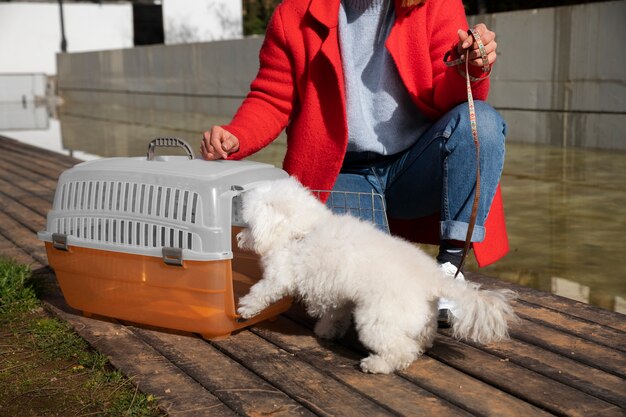Crate Training Tips for a Happy Pup

Crate training is an essential skill for any dog owner, but it doesn’t always go smoothly. If you’re facing challenges like reluctance to enter or whining when the door closes, don’t worry—you’re not alone. Here are practical solutions to common crate training issues to help your dog learn to love their crate.
Why Your Dog May Be Struggling
Before diving into solutions, let’s look at why crate training can sometimes be a challenge:
- Inconsistent Rules: If the crate isn’t consistently part of your dog’s routine, they may not understand its purpose.
- Negative Associations: If your dog associates the crate with being punished or left alone, it won’t feel like a safe place.
- Excess Energy: High-energy dogs struggle to settle down, making the crate feel confining.
Now, let’s tackle these issues head-on with actionable tips.
Tips for Common Crate Training Problems
Make the Crate a Positive Space: Turn the crate into your dog’s favorite spot. Add a soft bed or blanket and toss in high-value treats, toys, or chew bones. Encourage your dog to explore the crate on their own terms, without pressure.
Feed Meals in the Crate: Dogs naturally relax around food. Start by placing their food bowl just inside the crate, then gradually move it further in. This builds positive associations and creates a routine that reinforces the crate as a safe space.
Use Fun Training Games: Play crate-focused games to make training enjoyable. Toss a treat or toy into the crate and encourage your dog to retrieve it. Reward them with praise when they step inside. These simple exercises build confidence and curiosity about the crate.
Match the Crate to Their Energy Needs: If your dog is full of energy, they’ll struggle to settle. Make sure they’ve had a walk, play session, or mental stimulation before crate time. A tired dog is more likely to relax and rest in the crate.
Keep Crate Time Short and Sweet at First: Start with brief crate sessions, just a few minutes at a time, to build trust. Gradually increase the duration as your dog grows more comfortable.
Avoid Common Pitfalls: Don’t force them in. Forcing your dog into the crate can create fear and resistance.
Skip punishment: Never use the crate as a “time-out” zone—it should always be a positive place.
Be patient: Every dog learns at their own pace. Stay consistent and positive.
Make Crate Training Work for You
Successful crate training comes down to consistency, positivity, and patience. By turning the crate into a rewarding, safe space, your dog will grow to love it, and so will you.
If you’re ready to transform your crate training routine, start with these tips today. And if you need extra guidance or personalized help, I’m here to support you. Reach out, and let’s make crate training a success for you and your pup!
Dog Training for You and Your Dog
608-692-7819